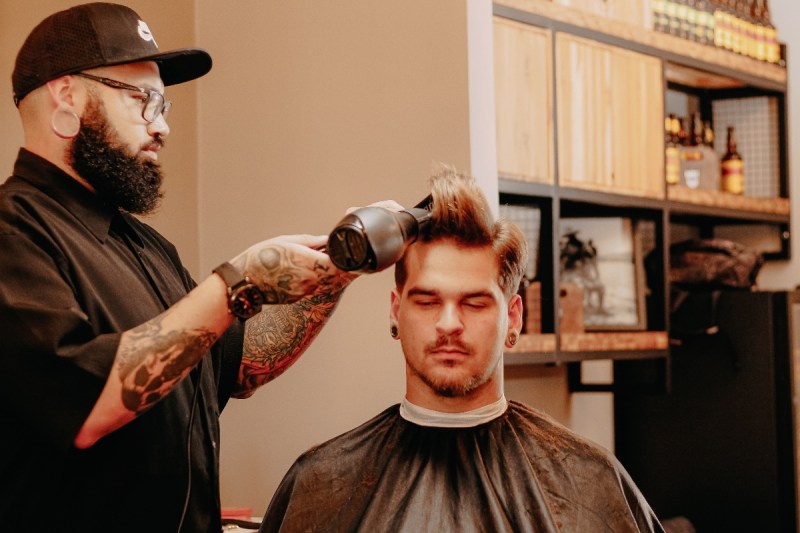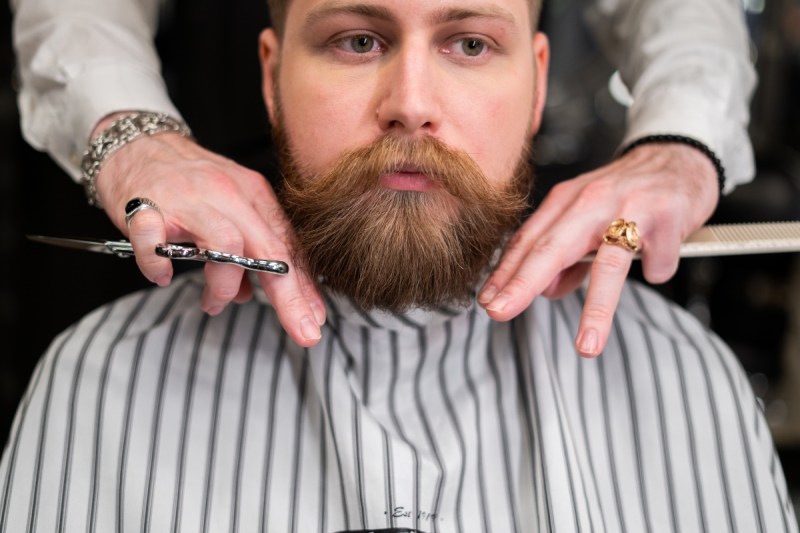You can likely tell when your skin is getting damaged from the heat, like the water or the sun. When this damage shows, you can quickly move to stop the harm by applying sunscreen or making the water cooler.
The point is that our skin tends to raise red flags about heat damage more quickly than our hair. Damage from heat styling can accumulate over time. As a result, you may be dealing with pesky side effects, wondering if you can undo the damage.
Prevention is the best medicine, and fixing it is a challenge.
These tips will help you protect hair from heat when styling and work on any issues you’re already having.

Why does heat styling damage my hair?
Let’s get scientific for a second. Every single strand of your hair has at least two layers of hair: The cuticle (outer) and the cortex (middle or inner). Some people have a medulla as their innermost layer of hair.
Heat styling alters the bonds in your hair and damages the cuticle, which protects the cortex. Since the cortex keeps hair strong, the lack of protection weakens it. Cue the breakage and clogged shower drains.
Signs of heat-related hair damage include the following:
- Dryness
- Dullness
- Split ends
- Frizziness
- Flyaways or trouble getting your hair to lay flat
- Frayed texture
- Discoloration
- Hair loss
How can I protect hair from heat styling?
Going back and trying to fix problems caused by heat styling can be distressing and get expensive. Your best bet is to protect hair from heat styling from the get-go. These tips should help.
Turn down the heat
The “less is more” cliché holds true when styling your hair. You may think turning that blow dryer all the way up, or a tool to 450 degrees will give you the best look. However, it’s not necessary to max out on heat. Begin by trying out the lowest setting and gradually increase as necessary. The process may require a little bit of trial and error to find your perfect temperature. Around 200 to 300 degrees is usually best.
People with fine hair will want to stay as low as possible. Their tresses are already thinner and can be more brittle.
Use a heat protectant
Heat protectants are like sunscreen or an umbrella for your hair when you heat style it. You’ll want to use one every time you heat-style your mane.
Look for an anti-frizz protectant with keratin, a protein that also naturally occurs in the hair to keep it strong. Silicones like Cyclomethicone and dimethicone can keep hair hydrated and smooth. Opt for a product that protects against the maximum heat — usually 450 degrees – even if you probably don’t need to go that high.
Take a break
Limiting heat styling to once or twice per week is best, but even switching to every other day can make an impact. If you can’t bear to do that, start with one day off per week — you may use that day to get creative with ways to style your hair or learn to love your au natural look.
Choose gentle shampoos and conditioners
Be sure to wash hair frequently with shampoo and conditioner to keep it clean and hydrated. The rule about not washing daily applies here, though. Natural oils actually help protect the hair. Every other day should protect without stripping hair of these essential oils. For a customized approach based on your hair type, speak with your barber or hairstylist.

Can you reverse heat-damaged hair?
That’s the $1 million question. Many products and professionals claim to be able to fix tresses miraculously after years of heat styling.
Sadly, you can’t undo what’s been done. Keep in mind that, like sun exposure and aging, heat-damaged hair is a cumulative result. If you forget heat protectant once, you’re probably fine. Just don’t make it a habit.
However, your hair is made up of dead cells that can’t pivot, and your body isn’t going to send new cells to fix what’s already been done. Once the cortex is exposed, it becomes weaker and more susceptible to damage. The only way to completely eliminate damage is to shave your head and start fresh. Go ahead and do that if you want — but it’s not necessary.
There are ways to manage heat-damaged hair while preventing future damage. All of the above preventative measures apply. Other ways to manage heat-damaged hair include:
- Hair trims. Regular hair trims will nix split ends, gradually helping you to nix damaged hair.
- Air dry your hair. If you can’t put the curling iron down, at least let your hair air dry. It’s one less time your hair will get exposed to heat over the course of a day.
- Switch shampoos. Look for ones specifically for moisturizing and repairing heat-damaged hair. Your favorite pro can help you choose one.
It’s best to prevent heat damage to your hair, as reversing it is impossible unless you’re open to shaving your head. Minimizing use of heat tools is best, even if it means switching to using them every other day or allowing hair to air dry. When you do use heat tools, be sure to use a protectant and set the temperature to the lowest possible setting. If you already have heat damage, book a trip to the barber pronto for a trim. It’ll start the process of getting rid of damaged split ends. Switch to a moisturizing shampoo and conditioner, but don’t use it every day — your hair’s oils act as a natural protectant.




